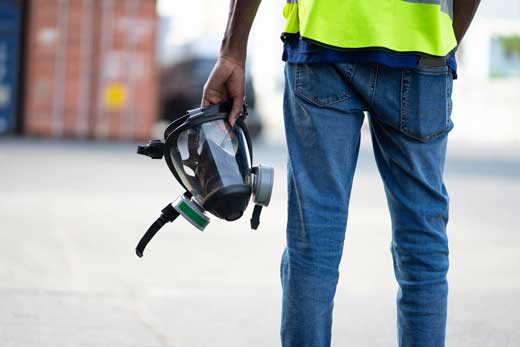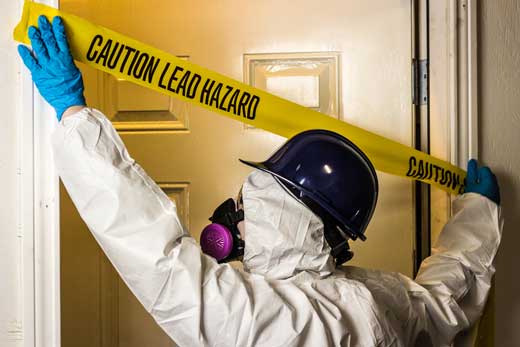
When construction companies and contractors work with hazardous substances, they can face liability risks. The substances they use may contaminate neighbouring properties or release chemicals into the air or groundwater.
Pollution coverage, also known as environmental coverage, is excluded from general liability insurance policies but you can purchase this additional coverage to protect your company’s operations for a limited period of time.
As an independent contractor or construction business, it is in your best interest to acquire pollution liability insurance to protect yourself against any claims of damage caused while on the job including bodily injury and property damage.
Want to learn more? Keep reading to find out how pollution liability insurance works and why your business needs it.
What Does Pollution Liability Insurance Cover?
Pollution liability insurance protects third parties from pollution caused by your activities. Along with injury, property damage, and environmental damage, this policy may cover you for clean-up costs involved in removing hazardous substances as well as restoring the property to a usable condition.
Pollution liability coverage often includes:
- Emergency response costs
- Civil fines
- Civil penalties
- Assessments
- Transportation exposures
- Legal defense fees
- Clean-up efforts
- Accidents and oversights (sudden incidents and pollution that occurs over a long period of time)
If your company works with on-site utilities such as sewer or water lines, this type of insurance also protects you from new sources of pollution discovered during the course of your project.
What Are Pollutants?
Here are some examples of pollutants involves in construction and renovation projects:
- Discovery of hazardous materials during site prep
- Release of substances such as asbestos and lead-based paint during demolition
- Discovery of underground storage tanks and buried waste material during excavation
- Formation of mold on wet materials and the release of hazardous materials during construction
Mold, water system contamination, and the reopening risks that affect remediated sites during post-construction can also occur – and be covered by pollution liability insurance.
Who Needs Pollution Liability Coverage?
Individuals or businesses exposed to pollution or harmful materials should have pollution liability coverage. In fact, many projects require this type of insurance regardless of the level of pollution exposure.
For example, if you own a company that deals with asbestos, restoration, or mold remediation, you should definitely have this coverage added to your existing commercial policy.
Examples of contractors who should have pollution liability insurance include:
- Demolition
- Mold and/or Asbestos Remediation
- Construction Contractors
- Cleaning Contractors
- Restoration Contractors
- HVAC Contractors
- Painting Contractors
- Excavators
- Landscapers
Keep in mind that if you are a subcontractor, your activities are not typically covered under the general contractor and owner’s insurance policies, so you may need to acquire pollution liability insurance on your own.
Exclusions to Pollution Liability Coverage
It’s important to check the details of your policy to ensure that all hazards involved in your project are covered. Some policies may exclude common hazards such as asbestos, lead, and mold found in older buildings.
Any pre-existing pollution on the job site may also be excluded from the pollution liability coverage.
If there are any particular hazards being dealt with on your job site that is not covered, contact your insurance company to see if you can purchase additional coverage. You may be able to add an additional rider to your coverage to cover a specifically known hazard.
Example Claim Scenarios
To give you an idea of how pollution liability insurance can protect your business, here are some example scenarios to consider:
- A contractor is hired to clean up and remove mold growing in a client’s home. However, the mold grows back years later and decreases the home’s air quality. The homeowner sues the contractor for bodily injury and property loss
- A renovator removes asbestos during a bathroom renovation but he didn’t remove it all. The remaining asbestos reduced air quality and one of the children ended up with a respiratory issue. The contractor is sued for bodily injury
- A construction company was completing an excavation on a construction site and released contaminated water into the municipal storm drains. This led to significant cleanup and restoration costs
- A renovator was working on the exterior of a building and released lead-laden dust into the interior. This resulted in cleanup as well as a class-action suit for lead poisoning to the residents
- A general contractor completed a building that ended up having a plumbing defect. This led to water damage and an outbreak of toxic mold
In all of these scenarios, pollution liability insurance will protect the business owner or contractor and cover damages as well as legal costs.
How to Get Pollution Liability Insurance
The first step in acquiring pollution liability insurance coverage is to call an expert insurance broker to ensure all of your coverage needs are met. For example, you can add site-specific coverage to your policy that will provide cleanup and third-party liability coverage for the premises you own or operate. You can also add operations coverage that will cover you on third-party job sites.
The cost for a pollution liability insurance policy varies from business to business. A business that uses a lot of hazardous products or uses them on a regular basis will have a higher premium than companies that only use a few.
When signing up for a pollution liability policy, our brokers at ARC Insurance will look at the type of business being insured, the types of chemicals and hazardous materials being used, and the disposal method of hazardous waste. We will also take into consideration the proximity of your business to residential neighbourhoods. Knowing all of these factors will help us find you the best pollution liability policy to cover your needs and protect your business.
Let’s talk today to review pollution insurance quotes and ensure you receive the best competitive rate!



